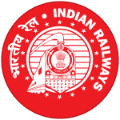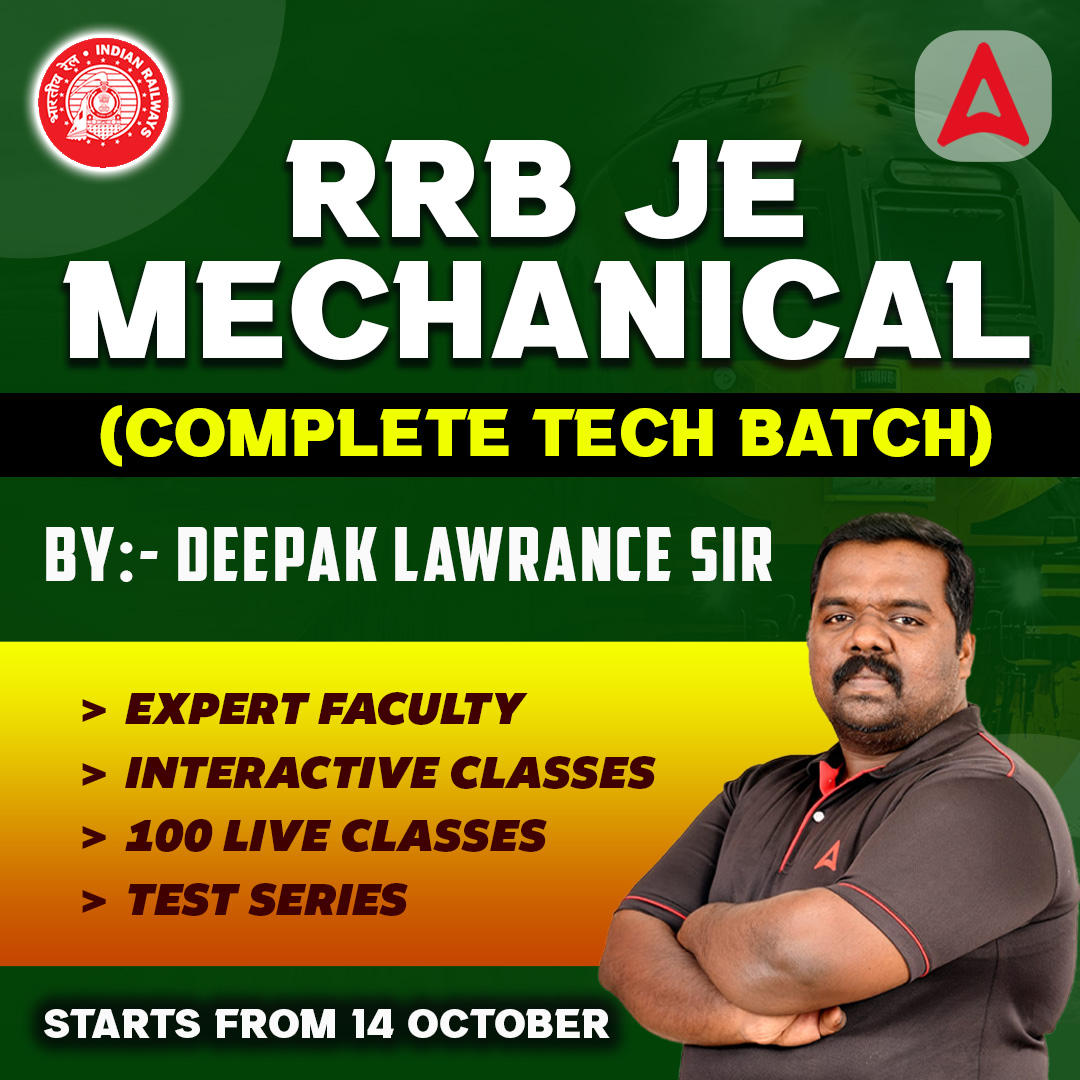- AP and TS Mega Pack
- Telugu Railway
- AP PSC
- TSPSC
- Telugu Bank
- AP Police
- Telugu SSC
- IBPS Clerk Telugu
- Grama Sachivalayam
- RRB ALP
- Telangana High Court
- AP TET
- RRB NTPC Telugu
- AP TS DSC
- APPSC Group 2 Mains
- TGPSC Group 2
- AP Police Constable
- TGNPDCL
- AP DSC SGT
- TG TET
- Telugu RRB JE
- TG NPDCL/SPDCL
- Union Bank LBO
- Online Degree
- Telangana VRO
- Tech Skills
RRB JE Mechanical 2024 Batch | Online Live Classes by Adda 247
Starts: 11-Oct-2024
Seats: 500
Timings: 07:00 PM - 08:00 PM
- Get Access To The Top Expert Faculties Of India For Best PreparationExpert Faculties
- Engaging Interactive Classes For Best Understanding From AnywhereInteractive Classes
- Get Recorded Sessions Of Every Live Class So That Learning Never StopsRecorded Videos
- Get Personalized Attention For Your Doubts With Limited Batch SizeLimited Batch Size
- Access to Structured Classes in Live & Recorded Form
- Interactive classes, handouts and class notes
- Doubt Solving on app, Telegram Groups & in person at offline centers
- Seminar & Topper Talks at Offline Centers
 Railway Tamil
Railway Tamil
This Course Includes
50 Hrs Online Live Classes
Faculty Profile

- 5+ years of Experience
- More than 10000 Aspirants Mentored
- " Guide and Mentor for Electrical engineering for State PCS and other state level examinations"
Overview
RRB JE தேர்வின் அறிவிப்பானது 2019 ஆம் ஆண்டு அறிவிக்கப்பட்டது, இதில் முதல் நிலை தேர்வு 2020லும் இரண்டாம் நிலை தேர்வு 2021லும் நடைபெற்றது. இந்த ஆண்டு ஜூலை மாதம் அறிவிப்பானது வெளியிடப்படது. 4 ஆண்டுகள் பிறகு அறிவிப்பு வெளிககிறதால், 652 காலி பணி இடங்களுடன் வெளியானது (சென்னை மண்டலம்). தேர்விற்கான விண்ணப்பம் 30.07.2024 முதல் 29.08.2024 வரை நடந்து நிறைவுபெற்றது. இந்த தேர்வு இரு கட்டங்களாக நடைபெறுகின்றது, முதல் கட்டமாக CBT-1 மற்றும் இரண்டாம் கட்டமாக CBT-2 நடைபெறுகிறது.
The notification of RRB JE exam 2019 was announced in which the first stage exam was held in 2020 and the second stage exam was held in 2021. The notification was released in July this year. After 4 years the notification comes out with 652 vacancies (CHENNAI ZONE). Application for the examination was completed from 30.07.2024 to 29.08.2024. This examination is conducted in two phases, the first phase is CBT-1 and the second phase is CBT-2.
This Package Includes
- 50+ நேரலை வகுப்புகள்
- 100% Syllabus Coverage
- Recorded videos
- Doubts Session available
Study Plan
Subjects Covered
- Engineering Mechanics
- Material Science
- Strength of Materials
- Machining
- Welding
- Grinding & Finishing Process
- Metrology
- Fluid Mechanics & Hydraulic Machinery
- Industrial Management
- Thermal Engineering
Exam Pattern
1st Stage CBT - 1

- *Negative Marking - ⅓
- Total Questions - 100
- Total Marks - 100
- Duration of CBT-1 Exam- 90 minutes
2nd Stage CBT - 2

- *Negative Marking = ⅓
- Total Questions - 150
- Total Marks - 150
- Duration of CBT-1 Exam- 120 minutes
RRB JE 2024 SELECTION PROCESS:
RRB JE EXAM AGE LIMIT:

NOTE: Covid-19 considered age relaxation given upto 3 years
RRB JE 2024 MECHANICAL EQUIVALENT DEPARTMENTS:

RRB JE MECHANICAL SYLLABUS:
Subject | Syllabus | No of Hours |
| Engineering Mechanics |
| 10 |
Material Science |
| 10 |
Strength of Materials |
| 10 |
Machining |
| 12 |
Welding |
| 12 |
Grinding & Finishing Process |
| 12 |
Metrology |
| 12 |
Fluid Mechanics & Hydraulic Machinery |
| 12 |
Industrial Management |
| 16 |
Thermal Engineering |
| 16 |





 50 Hrs
50 Hrs




